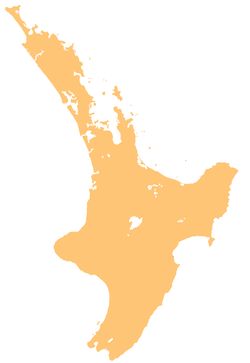Thames, New Zealand
|
Thames Hotereni (Māori) |
|
|---|---|
| Coordinates: 37°8′18″S 175°32′15″E / 37.13833°S 175.53750°E | |
| Country | New Zealand |
| Region | Waikato |
| District | Thames-Coromandel District |
| Population (June 2016) | |
| • Total | 7,140 |
| Postcode(s) | 3508 |
Thames ![]() i/ˈtɛmz/ is a town at the southwestern end of the Coromandel Peninsula in New Zealand's North Island. It is located on the Firth of Thames close to the mouth of the Waihou River. The town is the seat of the Thames-Coromandel District Council. The Māori iwi are Ngāti Maru, who are descendants of Marutuahu's son Te Ngako. Ngāti Maru is part of the Ngati Marutuahu confederation of tribes or better known as Hauraki Iwi.
i/ˈtɛmz/ is a town at the southwestern end of the Coromandel Peninsula in New Zealand's North Island. It is located on the Firth of Thames close to the mouth of the Waihou River. The town is the seat of the Thames-Coromandel District Council. The Māori iwi are Ngāti Maru, who are descendants of Marutuahu's son Te Ngako. Ngāti Maru is part of the Ngati Marutuahu confederation of tribes or better known as Hauraki Iwi.
Many people migrated to Thames at its peak, and it was soon the second-largest city in New Zealand (the largest being Dunedin then Auckland). However, as the gold began to diminish, so did the number of inhabitants, and although Thames never shrank, it has never grown much either. It is still the biggest town on the Coromandel. The population in the 2006 census was 6,756, an increase of 51 since 2001. Until 2016, a historical oak tree that was planted by Governor George Grey stood on the corner of Grey and Rolleston streets.
Thames was formed from two historic towns, Grahamstown and Shortland, of which many original buildings still stand. Shortland was to the south of Thames and was founded on 27 July 1867 when James Mackay, civil commissioner for the Hauraki District, concluded an agreement with local Māori. The land was rented for mining purposes for the sum of £5,000 per year, a colossal sum in the mid 19th century. This agreement secured the rights to local mineral deposits leading to the proclamation of the Thames Goldfield on 1 August. The leasing of the land for such a huge income was a source of great envy by other Maori iwi and hapu.
...
Wikipedia

